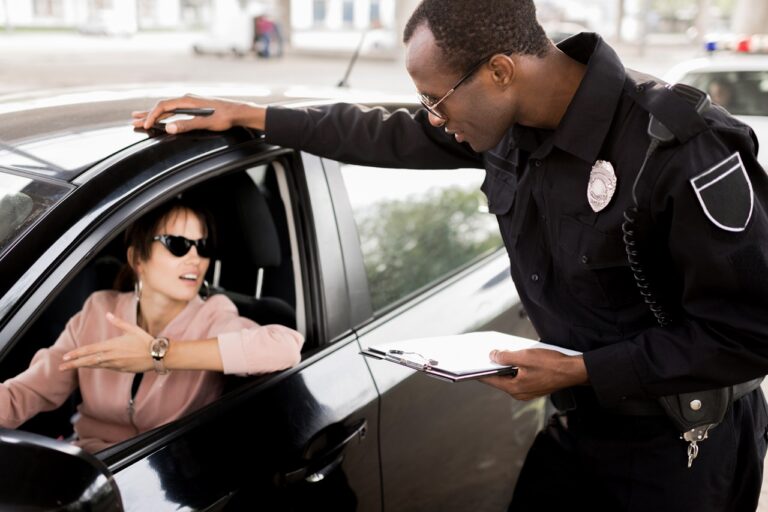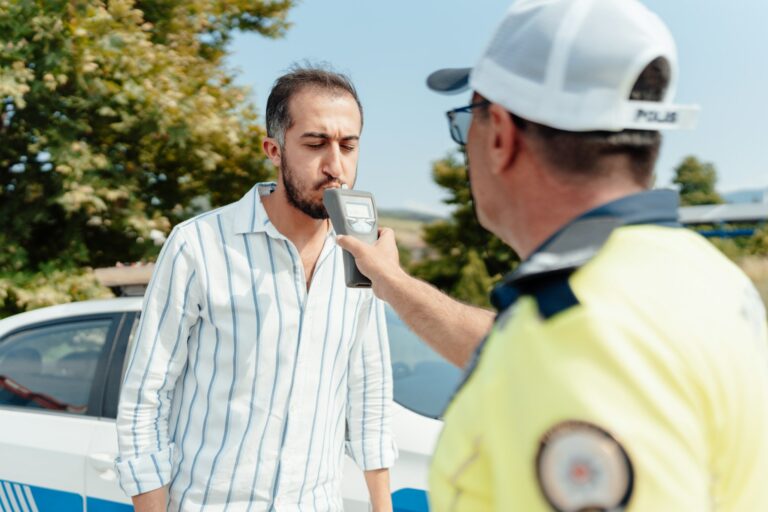What to Expect When You’re Pulled Over for a Traffic Violation
Traffic stops can be surprising. One moment, you’re driving, the next, you see flashing lights in your rearview mirror. It’s normal to feel nervous or anxious when you’re pulled over, especially if you’ve never experienced it before. Knowing what to expect can help ease some of that stress and make the process smoother for everyone involved.
Whether it’s for speeding, a broken taillight, or another issue, getting pulled over can happen to any driver. Understanding the common reasons why police officers initiate traffic stops can prepare you for what might come next. This guide will walk you through what typically happens during a traffic stop, how to act when approached by an officer, and what steps you can take afterward. By knowing these basics, you\’ll be ready to handle the situation calmly and confidently.
The Traffic Stop Experience
During a traffic stop, things usually unfold in a predictable way, which can help ease the uncertainties drivers might feel. Once an officer signals for you to pull over, it\’s important to find a safe spot on the side of the road. As you park, keep your hands visible on the steering wheel and stay inside your vehicle unless instructed otherwise.
There are many reasons a driver might be pulled over. Common ones include speeding, having expired registration, not wearing a seatbelt, or having malfunctioning lights. Officers might also stop a vehicle if it\’s suspected of more serious offenses, like DUI or reckless driving.
As the officer approaches your car, expect them to identify themselves. They will likely ask for your driver\’s license, vehicle registration, and proof of insurance. The officer might also ask some basic questions about where you\’re coming from and where you\’re headed. Their purpose in these questions is to assess the situation and determine whether further action is needed.
How to Act During a Traffic Stop
Properly handling a traffic stop can make the process smoother and less stressful for both you and the officer. Start by signaling your intention to pull over using your indicator. Look for a safe location to stop your car, such as a well-lit area or the shoulder of the road, if available.
Remember, staying calm and composed is key. Take deep breaths to maintain a level head. Avoid any sudden movements that might alarm the officer. Keeping the car\’s window rolled down slightly and hands on the steering wheel can signal cooperation.
Effective communication is crucial during these stops. Listen to the officer’s questions carefully and respond honestly. If you don\’t understand a question, politely ask for clarification. Speaking in a respectful tone will go a long way in keeping the interaction professional and amicable.
Understanding Potential Outcomes
After a traffic stop, the outcomes can vary based on the circumstances and the officer\’s judgment. Here are some possibilities you might face:
1. Warning: Sometimes, officers may issue a verbal or written warning if the offense is minor or you have a clean driving record. A warning typically doesn’t impact your driving record or incur fines.
2. Infraction Ticket: This is more common and involves a fine. Examples include speeding or minor equipment violations. Infraction tickets add points to your driving record, and accumulating too many can lead to increased insurance rates or license suspension.
3. More Serious Charges: If the offense is severe, like DUI or reckless driving, you could face misdemeanor charges. These are more serious than infractions and can result in heavier fines, community service, or even jail time.
The officer decides based on factors like your driving history, the nature of the violation, and your behavior during the stop. It\’s crucial to be attentive and cooperative to potentially influence the outcome favorably.
Steps to Take After a Traffic Stop
Once the traffic stop concludes, consider the following actions to handle the situation effectively:
1. Document the Encounter: Make notes about the incident as soon as possible. Include details like the officer’s name, badge number, and the location of the stop. This can be helpful if you need to contest the ticket or recall specifics later.
2. Evaluate Your Options: Decide if you will pay the fine, contest the ticket, or seek assistance. Gauge if attending traffic school is beneficial to prevent points on your record.
3. Understand Court Requirements: If you choose to contest the ticket or if the charge requires a court appearance, be aware of deadlines and requirements. Missing a court date can lead to additional penalties.
Remember, being informed about the process can save you time and trouble, protecting your driving privileges and your record.
Conclusion
Getting pulled over can be unsettling, but understanding the steps involved in a traffic stop and the potential outcomes can keep you prepared and informed. Being composed, cooperative, and clear with the officer often leads to a smoother encounter. Should you leave the traffic stop with a ticket, it\’s essential to know your rights and responsibilities. Deciding whether to pay or contest a ticket can affect your driving record and future insurance costs.
At Mr. Ticket, we are dedicated to helping you navigate these challenges effectively. Whether you\’re dealing with a traffic infraction in California or a more complex situation, our team is ready to help you make informed and effective choices. Contact us today.








